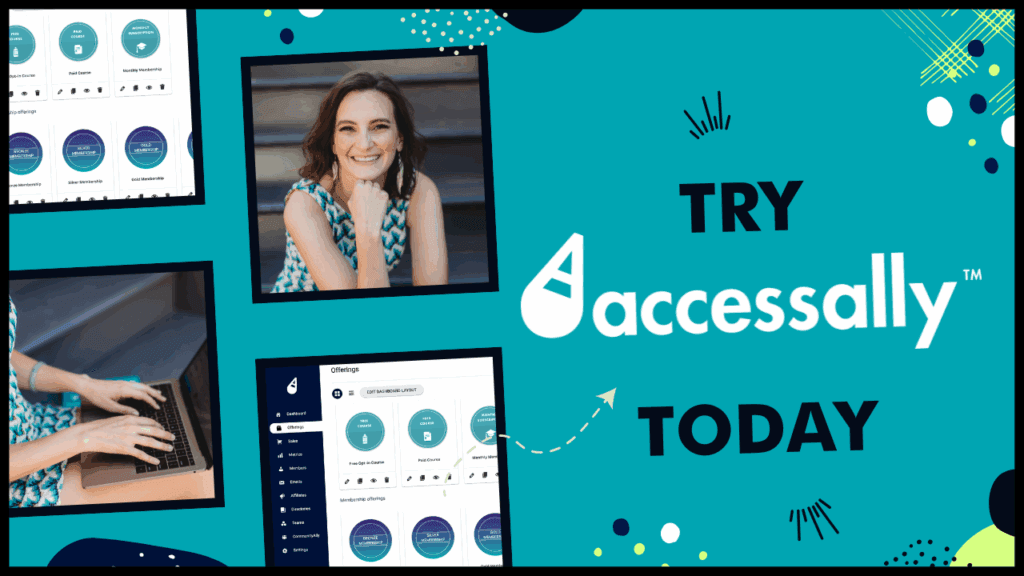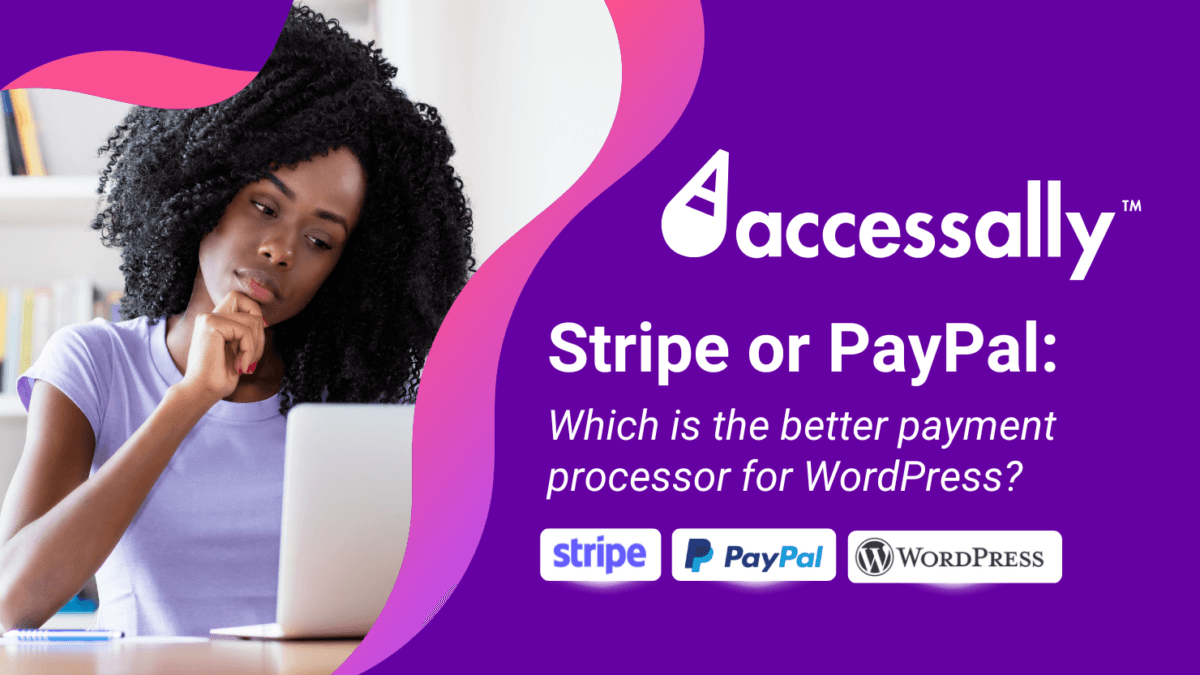If you’re a freelance web designer, you know how important it is to find new clients.
Your pay depends on you being a go-getter and finding someone who will hire you to complete design services.
That’s why learning how to get more web design work as a freelancer is key!
Whether you’re looking for a full-time job designing and maintaining a site, or just designing the site and moving on to another project, you need to know where to find your ideal clients. We’re sharing tips alongside some of the most popular things that clients look for when hiring a web designer.


How to get more web design work: 1, 2, 3… Go.
1. Create Your Own Website
The first thing any prospective client will want to see is the type of work that you can produce for them.
This is where a well done personal website will come in handy – both as a portfolio to show off your design skills and as a sales page that can win them over.
Include information about your skills and a portfolio showcasing all your projects. When people are trying to find web designers, they want to see what work you’ve done before. Be sure to list your contact information so that people can inquire about services and price list of your services.
It is important that you and the client have a reliable line of contact, so that if a concern arises, it can be discussed and handled quickly.
2. Join Social Media Groups With Your Ideal Clients
Let’s face it, social media is where most of us spend a majority of our days online.
Making sure your online presence is strong is a great way to connect with people who might want a personal website or are in immediate need of a professional site.
Social media groups allows you to reach people all over the world in a matter of minutes — and some of these people just might want to hire design freelancers, like you, for their next web design project.
You just have to learn how to balance being helpful, and letting people know that you’re available to take on new projects.
I don’t have to tell you that professionalism goes a long way online and social media is no different. Be yourself, but remember that you’re representing your business, too.
3. Visit Local Businesses
Many local businesses need someone to design a website for them, but never get around to it. This is the perfect opportunity for you to show off your skills while taking their business online.
In my early teens, I helped a local granite countertop company design their very first website… I even went so far as to put pieces of granite on my personal home scanner – so they could have samples to show on their site.
You can start by researching local businesses in the yellow pages or other online directories, and noticing which ones have websites and which ones don’t. You might notice some sites that are outdated or could use a few tweaks.
Then it’s simply a matter of showing up in person or calling ahead to set up an appointment. Tell them who you are and what you can do for their business with a website, as only freelance website designers can.
If your services are needed, be sure to schedule an appointment and take along your portfolio to the meeting.
4. Reach Out To Your Network and Ask For Referrals
If you’re just getting started you might reach out to friends or family members who are planning a big event, like a wedding or a family reunion, to ask them about creating a special website for their occasion. It’s a great way to showcase your work and hopefully pique the interest of other people who might need the same services.
But the real benefit of your network is that people always know someone who is looking for a website. When you’re wondering how to get more web design work, there’s no better way to get a gig than to ask for referrals.
It’s especially useful to reach out to past clients (especially ones you LOVED working with!) to let them know that you’ve got some availability in your schedule.
Then make sure to treat these referrals like gold, and follow up with the person who sent them your way… to let them know that you’re taking great care of their friend or referral.
5. Pitch Yourself to Ideal Customers
I still remember a few years ago when I got a cold email from someone who thought I could do much better with my video production. The email was friendly, it gave me some ideas for improving my web presence, and it also included a way for me to get in touch about discussing working together on my videography.
The same thing works for getting more web design clients! If you find someone you’d LOVE to work with, you can craft a thoughtful and gentle pitch to send their way and woo them into working with you.
Be sure that your pitch includes ideas on how your web designing skills will benefit and help improve their business. Point out how you can help them resolve issues, and meet goals and deadlines. Freelance web designers who are confident can work with their ideal clients!
6. Internet Job Boards
I can’t say that internet job boards have ever worked for me, but there are certainly benefits to checking in on these sites every now and then. Many of these jobs will require that you bid on the project that you want to do.
Some boards will allow you to see other people who have put in a bid on the job and their asking rate. You can then decide whether or not to bid as well. Some clients will often look for the freelancer with the lowest rate rather than who might be better qualified for the job.
Always be sure to have your portfolio ready to present with all the jobs that you have done in the past.
7. Be Present On Freelancer Websites
Register on freelance websites. These sites will allow you to create a profile and list your skills and a link to your portfolio. People can then view your profile and reach out to you to hire you for a job.
You might also get a chance to work on a team with others who are looking for a person with a certain designing niche skill. For many people, this is a great opportunity that can often lead to working with the same team on other projects for clients.
Working on a team assignment is also a great way to acquire new skills and work with others who might can help point you in the direction of other big job opportunities.
It might seem like you’ll attract freelance web design jobs for beginners this way, but if you showcase your skills you can get ahead, too.
8. Reach Out On Web Designer Forums
Web designer forums are a great start to locate people in the same field. You can find people who need help on certain projects or who might want to hire someone to do a specific job.
If you have a specialty niche, such as coding, working with WordPress, or graphic design, it will not take long for someone to come along who needs your assistance.
Many of these sites will allow you to post a link to your webpage. However, many of these forums also have strict rules about spamming and advertising for business. Be sure to read their posting rules and guidelines.
9. Check Local Listings
Local businesses have always used newspapers as a form of connecting with the public. Check your local newspaper’s classified section, either in print or online. For example, if you are a web designer in Kansas City, local marketing can help you sell to your customers from the local community and surrounding areas.
Not all small businesses have websites to post their need to hire someone, so most of these companies still use the traditional way. However, you can help take these small businesses into the digital era by helping them create a website, which might eventually lead to other jobs in your local area.
You can target your local customers by implementing a local marketing strategy.
10. Leave Business Cards Behind
Find billboards in grocery stores, libraries, and small businesses to leave your business card posted. The hope is that someone who needs your services will come along, see your card, and inquire about your skills.
As a freelancer you have to do everything you can to be seen; if you don’t, there is always someone else who will. Plus, one chance encounter could lead to a big client who might refer you to a dozen more amazing clients.
11. Join Professional Groups & Attend Events
Networking is one of the best ways to meet professional people in your niche and hopefully snag jobs. There is always someone who knows someone who need some type of service.
If you’re not sure what types of events to attend, you’ll want to look at local WordCamp or PodCamp conferences, and branch out from there. You don’t want to spend all your time with other freelance developers, but meeting some of these folks will help you to see what they’re doing to get clients, too.
Plus, you get additional support and training to grow your freelance web design business into an agency if that’s something that appeals to you. Or you can stay in the solo business model, and continue to refine who you want to work with and grow by adding leveraged services and products that aren’t a direct exchange of time and money.


What Clients Look For When Hiring A Web Designer
Finally, what exactly are clients seeking when they are looking to hire a freelance web designer. Here’s a deep dive into the crucial factors:
1. Your Portfolio and Past Work
Clients often start their search by examining a designer’s portfolio. It provides a window into the designer’s style, versatility, and capability.
A diverse portfolio that showcases various projects – from ecommerce sites to personal blogs or corporate websites – can be particularly appealing. They want evidence of a designer’s skill sets and ability to transform different visions into functional designs.
2. Technical Proficiency
While creativity is at the core of web design, the underpinnings of a successful website lie in its technical soundness.
Clients look for designers familiar with responsive web design, cross-browser compatibility and the latest search engine optimization best practices.
3. Communication Skills
Web design is a collaborative process. As such, clients value designers who can communicate effectively, understanding client needs while also offering their expertise to guide the project.
Regular updates through project management tools, responsiveness to feedback, and clarity in addressing doubts can set a designer apart.
4. Testimonials
Word of mouth remains a powerful tool. Clients frequently seek testimonials or reviews from a designer’s past clients.
Positive feedback, especially when it highlights professionalism, punctuality, or a designer’s knack for capturing a brand’s essence, can sway decisions.
5. Understanding of User Experience (UX) and User Interface (UI)
A website’s user experience can make or break its success. Clients are on the lookout for designers who have a keen understanding of UX and UI principles.
A designer’s ability to create intuitive, user-friendly layouts that enhance the visitor’s journey is highly prized.
6. Budget
Cost considerations are inevitably part of the hiring process. Clients often have a budget in mind and are looking for designers who can offer the best value within that range.
It’s not always about the lowest price; it’s about the balance between cost and the quality and range of services offered.
7. Adaptability and Openness to Feedback
The design process often involves revisions and tweaks.
Clients appreciate designers who are adaptable and open to feedback, viewing the process as a collaborative effort where both parties work towards the best possible outcome.
Avoid These Red Flags . . .
While seeking the right freelance designer is largely about identifying strengths and positive attributes, clients are equally vigilant about spotting potential red flags.
Let’s explore some of the common red flags clients are wary of:
- Lack of a Clear Portfolio. Absence of a comprehensive portfolio or only showcasing generic templates without any real-world projects.
- Inconsistent Communication. Delayed responses, vague answers, or a lack of clarity in communication.
- No Contract or Agreement. Reluctance to provide a clear contract outlining deliverables, timelines, and payment terms.
- Over-Promising. Setting unrealistic expectations, such as delivering complex projects in an implausibly short timeframe or at an unbelievably low cost.
- Lack of Relevant References. Hesitation to provide references or references that seem unverifiable.
- Reluctance to Accept Feedback. Appearing defensive or unwilling to incorporate client feedback.
- Outdated Techniques or Tools. Advocating for outdated practices or unfamiliarity with modern design tools and platforms.
- Vague Pricing Structures. Absence of a clear pricing structure or hidden fees not disclosed upfront.


Over To You Now…
There are many opportunities when it comes to getting the work that you need as a website designer. As a freelancer and small business owner, you have to be willing to put the effort into finding new clients, and sometimes this means stepping outside your comfort zone.
However, once you do land your ideal clients, you will be happy that you gave your all into making your dreams come true.




